Bordeaux dry whites 2018
Posted on April 26, 2019

Challenging vintage, but some fine wines
By Panos Kakaviatos for wine-chronicles.com
26 April 2019
The dry whites generally lack the panache and remarkable balance of the 2017 vintage and – for that matter – the zingy energy in 2014, 2010 and 2008, where acidities lent more vivacity. In this challenging vintage, vintners picked earlier or harvested grapes from colder soils with less solar exposure to retain freshness.
Depending on terroir, some preferred Semillon grapes, while others preferred Sauvignon Blanc. As with the reds, aggressive mildew spread in vineyards in the first part of the growing season, and a hailstorm struck Blaye, Sauternes, Graves (where many whites are crafted) and southern Médoc regions (where few dry whites are crafted), significantly affecting yields at some estates.
Humble Bordeaux AOC wines performed better than expected
Maybe it is counterintuitive, but some wines from so called lesser regions, with colder soils, and less optimal ripening exposures, retained a certain energy. At least that was my experience tasting scores of humble Bordeaux AOC whites from 2018. Some wines there that only reach about 12.5% alcohol in an average vintage obtained up to 13.5 in 2018, but the cold soils retained enough acidity to bring about some good whites with body and enough energy: and the prices will be interesting.
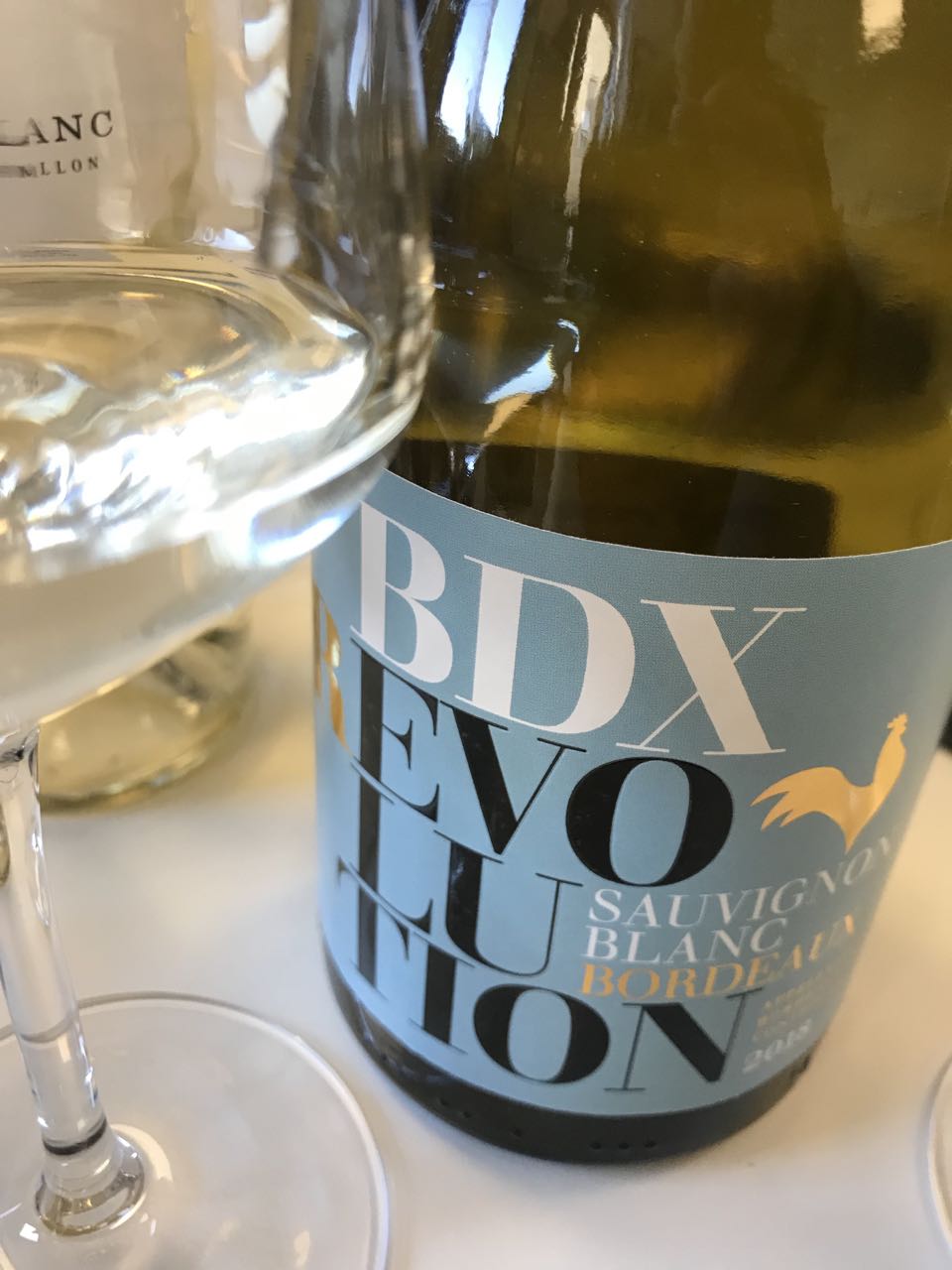
Take for example a wine called Bordeaux Revolution, pictured above, which exhibits lovely brightness, and a nose of ripe, juicy expressions of morning grapefruit. Bravo to David Hohnen of Cloudy Bay in New Zealand, who vinified this wine in its first year of production for the vintage 2018. Only £9 suggested retail in the UK market, but not yet officially listed. My detailed notes on this wine, and many other dry white Bordeaux AOCs from 2018, will be published in a later edition of Decanter this year. Meantime, my tasting notes from many of the “upper echelon” appellations below…
Among top whites tasted?
Domaine de Chevalier, Pavillon Blanc de Château Margaux, Les Charmes Godard Read More
First impressions of Bordeaux 2018 from barrel
Posted on March 28, 2019

Cautious optimism and Petit Verdot
By Panos Kakaviatos for wine-chronicles.com
(Dear readers, I have since published an update to this initial posting from late March 2019, here: https://wine-chronicles.com/blog/bdx18-barrel-hedonists/)
OK, this has been just a first day in Bordeaux – and many other writers and commentators have been here already for over a week to taste. But let me say a few words following a series of wines tasted with Christophe Coupez, an oenologist in Pauillac in the northern Médoc.
First off, I have rarely seen such high proportions of Petit Verdot in some of the wines I have tasted. Coupez explains that that is a grape that likes its “feet in the water and head in the sun,” so you did get that in 2018: lots of water in the winter and spring, followed by lots of sun – and dry weather – throughout most of the summer. Also as there were less of the other grapes, he added, the Petits Verdots (especially the clone 400) produced bigger grapes and rugged, too, so these were able to make up to some extent the quantity of production. They certainly added some spice and structure to some of the wines I tried from his lab.
Many have written of high alcohol levels and moderate to low pH levels in 2018, which made me think that we may be dealing with a 2009 (sounds great!) or even 2003 (sounds not really so great), but 2018 comes across unique and positively so, with the wines so far tasted, from humble €10 ($11) a bottle wines to the venerable Château Margaux (which I did not taste at Coupez’s lab, but at the château).
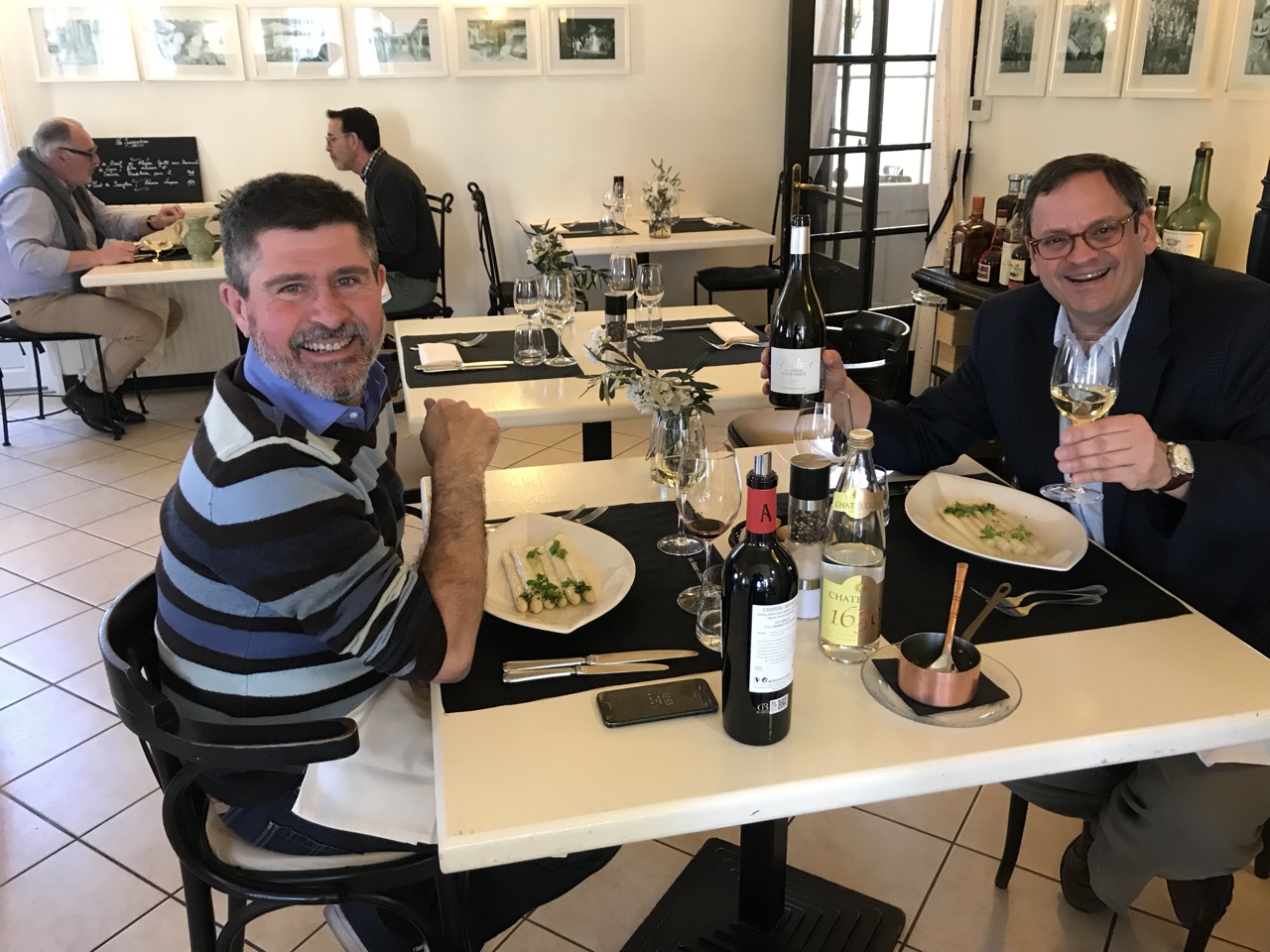
And why not all smiles? With Christophe Coupez at the excellent restaurant Saint Julien, lunching with white asparagus in season and excellent white Bordeaux. Oh, and the 2018, I understand, is a pretty darn good vintage, especially in the Médoc.
Before we get to the Margaux I tasted today, I would say that Château Belle-Vue (AOC Haut Médoc), just next to the famous Château Giscours of the Margaux appellation, proved lovely for the vintage, with robust opulence but freshness on the nose as well, really nicely balanced. There is a ripe Cabernet (48% of the blend) but also loads of expressive Petit Verdot (20%) with the Merlot at 32% lending some smooth tannin. Good mid palate sap here. 91-93. This estate also bottles a 100% Petit Verdot, which was impressive, but not as complex in expression as the flagship wine. Read More
2017 at Domaine Zind Humbrecht
Posted on March 13, 2019

An excellent vintage, built for aging
14 March 2019
By Panos Kakaviatos for wine-chronicles.com
It is always a pleasure to taste the latest vintage of wines from Domaine Zind Humbrecht.
And so it was on 12 March 2019, at the domain, where I joined various participants, including Paul Liversedge MW, who is based in Zurich.
Quite a contrast to 2016, a very good vintage, although some wines seemed a tad understated. Not so in 2017, a vintage of low yields due to a harsh spring frost and a hot and dry summer, which led to concentration and high quality, if somewhat lower-than-average acidities.
Indeed, summer temperatures were unusually high, classifying the vintage as the 5th hottest over the last 40 years in Alsace, by some estimates. As some readers recall, 2017 is known also for devastating morning frosts in April, which were widespread but localized to certain sectors, especially around Colmar, and did most damage on the plain and lower slopes.
Although many excellent terroirs, including the legendary Rangen de Thann, were not too affected, owner and winemaker Olivier Humbrecht MW explained that the “bit depressing” frost led to losses ranging between 95% and 30% for his potential production.
Hardest hit was Gewurtztraminer, more vulnerable to frost. Indeed, for some areas, Humbrecht explained how his father – who has 60 years of vintages behind him – had never seen so much frost damage. “In one morning, we were only able to harvest 42 hectoliters (nearly 1,110 gallons) of Gewurtztraminer, planted in seven hectares (17.3 acres),” Humbrecht wrote in his vintage summary.
For those grapes that withstood the frost, however, quite ideal weather conditions and an adequate level of rainfall encouraged steady growth of the vines leading to the precocious and fast harvest, which started earlier than usual in many areas, given the summer heat: Humbrecht writes of a veritable heat wave (la canicule) already in the latter part of June and July, that provoked some hydric stress. Thankfully August was not as torrid, so grapes were able to be picked at excellent maturity.
What is perhaps most fascinating about 2017 was how the low crop made the vines more drought resistant. Furthermore the quality of the phenolics was such that the wines leave you with an impression of structure akin sometimes to a red wine, Humbrecht said. It was especially important to pick at the right time in 2017, either for some vineyards that were late because of the frost or for others that could have exhibited too much potential alcohol if picked too late, as maturity came quickly.
With regard to late harvest wines, the drought brought less botrytis, as expected, but the passerillage ended up making the grapes became desiccated and dried out, which enhanced the impression of acidity and preserved the fruit more.
Humbrecht believes that 2017 is a “grand vintage” the quality of which will be proven with excellent aging potential. As you can see in the video, it was interesting how he compared the vintage to 1985, by opening a bottle of Muscat from the Goldert terroir from that vintage – a gorgeous wine by the way.
Huge thanks to Charles Amponsah for filming and editing the video. Read More
Pessac-Léognan and Graves from bottle 2016
Posted on March 11, 2019

Admirable vintage in red and white
By Panos Kakaviatos for wine-chronicles.com
11 March 2019
Favorite reds include a magnificent Les Carmes Haut Brion, as well as usual suspects Domaine de Chevalier and Haut Bailly
Among the whites, I really liked Domaine de Chevalier and Château Smith Haut-Lafitte and Château Malartic Lagravière (also try the second wine of this estate, damn good in 2016)
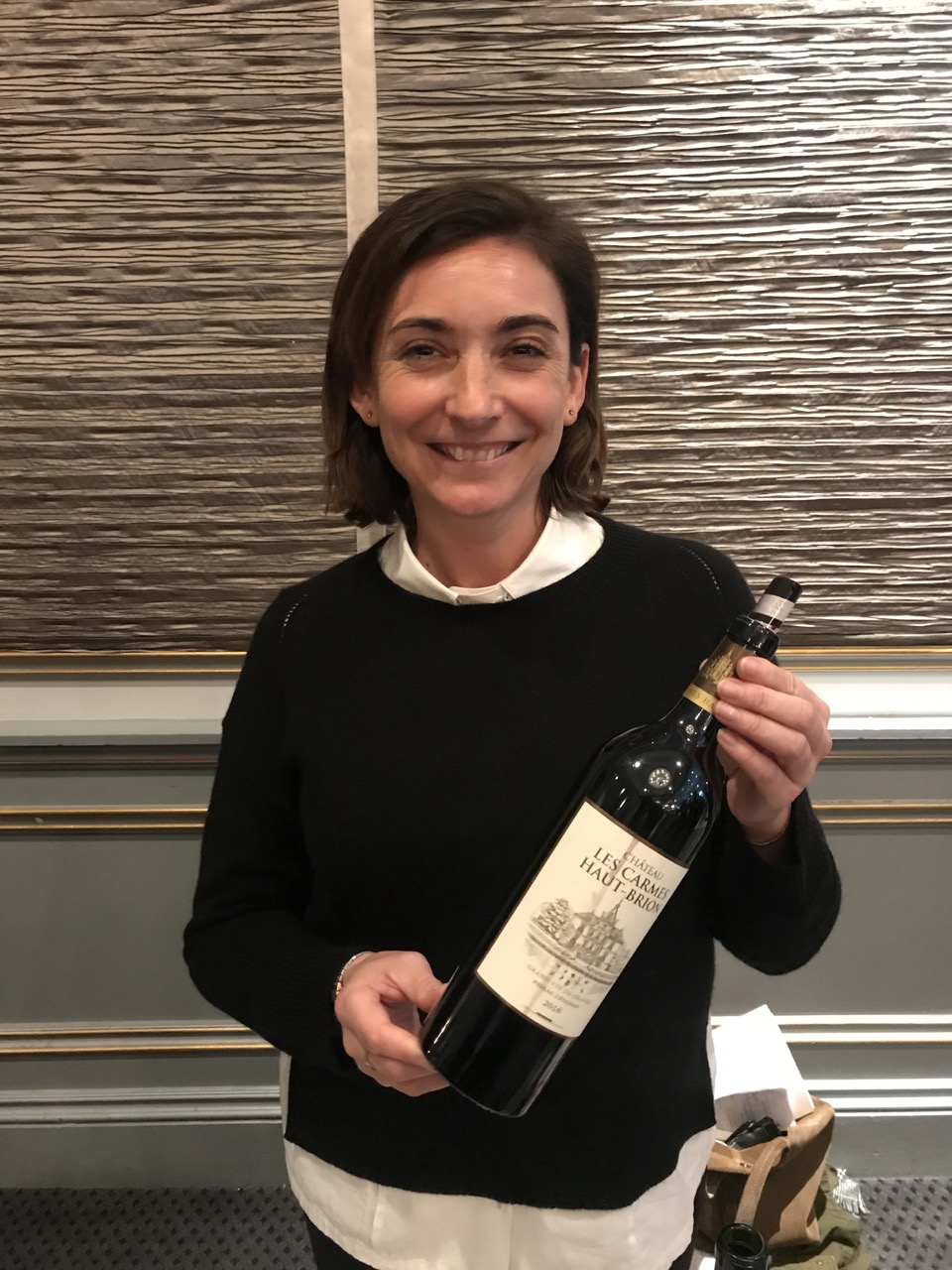
Stéphanie Libreau should be mighty proud of her Les Carmes Haut Brion: a top Bordeaux in 2016 to be sure!
As we saw, 2016 was especially successful in the northern Médoc and in Pomerol.
Of the wines that I tasted from the northern Graves – the appellation of Pessac-Léognan, created in 1987 – many also excelled, in both red and white. Alas, I did not get a chance to taste either Château Haut Brion or La Mission Haut Brion from bottle, but when I do, I will repost.
Based first on a tasting at Château Bouscaut in December last year (is that not just a gorgeous picture above?) with wine writers Jane Anson, Yohan Castaing, and Yves Beck, 2016 is one of those happy vintages (think in terms of 2010 for example, or 2001) where the quality of the dry whites equals that of the reds). More often, a vintage tends to favor one over the other.
These impressions were confirmed again when I tasted more wines from the Graves region at a tasting of the UGCB in Philadelphia last month.
2016 is a very good vintage for Graves region in general. Perhaps the “highest red wine peaks” of 2016 are more likely to be found in Pomerol and in the northern Médoc, but a sign of a very good vintage is that even lesser wines performed well, and that was the case at the Château Bouscaut tasting, where second wines also were sampled, some providing quite good deals, should you encounter them at restaurants, for example.
As per usual, if the wine is in bold, I liked it in particular. If red and bold, even more. If underlined, too, then a nirvana of sorts. Read More
Assessing 15 vintages of Léoville Poyferré
Posted on January 24, 2019

By Panos Kakaviatos for Wine-Chronicles.com
24 January 2019
Over the last nine years, I have been organizing comprehensive verticals of top Bordeaux estates, sometimes several times in one year, and often in Washington D.C.
The most recent, a Friday evening 18 January 2019 dinner at the French embassy in Washington D.C., featured Château Léoville Poyferré, with estate co-owner and recently named director Sara Lecompte-Cuvelier presiding. The cover photo is by David Zimmerman, who took many of the photos for this blog entry.
We assessed 15 vintages, all ex-château and reaching back (not too far) to the celebrated 1990. Chef Mark Courseille of the French Embassy restaurant Le Café Descartes again showed some magic to go with the wines.
This was the second time I had organized a dinner at the French embassy. Two months before, I had organized a dinner for Château La Conseillante, with 16 vintages, which was reviewed in several media, including Isaac James Baker in his influential wine blog and by participants like Kevin Shin in Cellar Tracker.
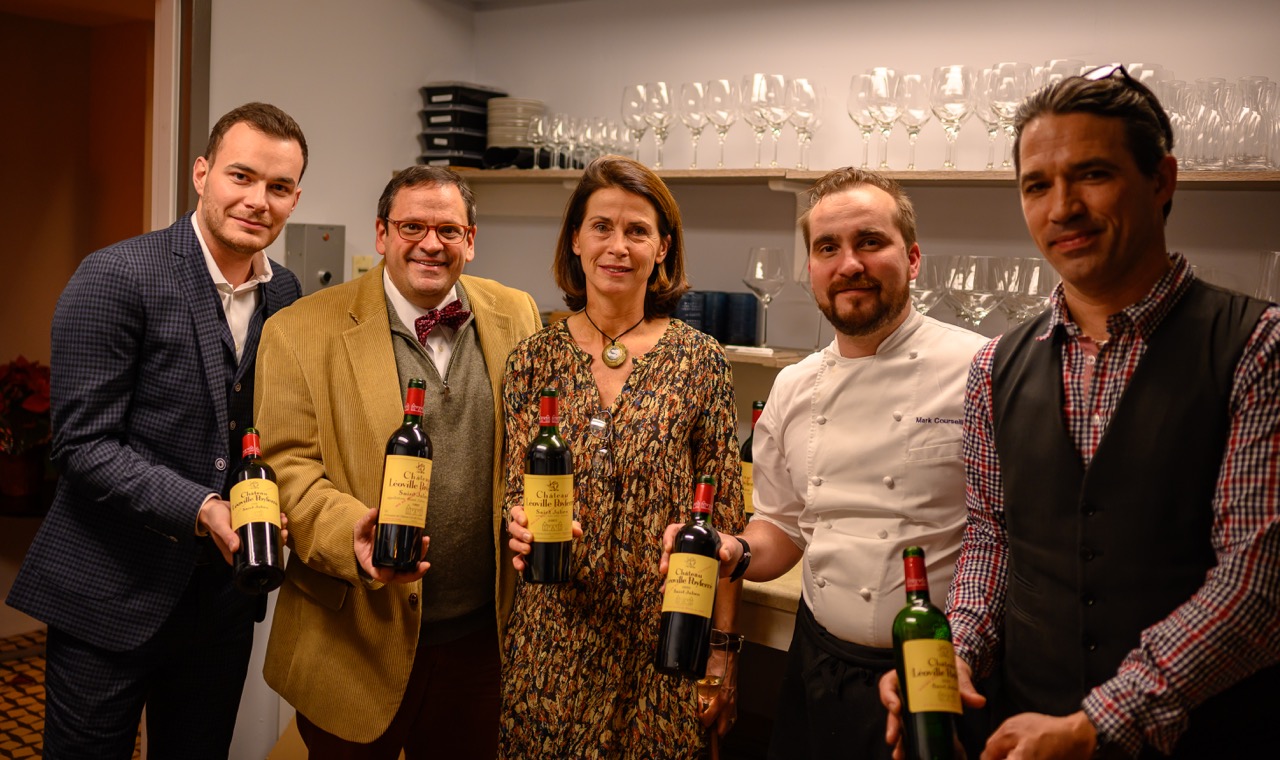
With restaurant director Max Jacquet, myself, director of Château Léoville Poyferré Sara Lecompte-Cuvelier, restaurant chef Mark Courseille and sommelier Laurant Lala (photo by David Zimmerman)
The great Léovilles
For the 32 wine geeks who attended, it was both useful and fun to taste relatively recent vintages of this famous second growth in the appellation of Saint Julien, to see how the wines are evolving at this point in time.
As most readers know, Léoville Poyferré, Léoville Barton and Léoville Las Cases were once part of a single, sprawling estate, only divided after the 18th century, as the French Revolution had destabilized many a château ownership. From the single estate, Château Léoville Barton was established in 1826. Las Cases was founded some 14 years later, in 1840. Not too many years later, Poyferré was established.
Fast forward to today, and you have Eric Boissenot who consults Léoville Las Cases and Léoville Barton, and Michel Rolland who consults Poyferré (since 1994).
Methods and styles vary among the three, which makes it great to compare and contrast.
I had already organized over the past few years tasting dinners with Léoville Las Cases and Léoville (and Langoa) Barton, both in Washington D.C., so it was fun to finally organize one in Washington D.C. with Léoville Poyferré. As celebrated wine author Jane Anson wrote in 2017, “the Léoville trio is among the surest bets in the world of fine wine”. Read More
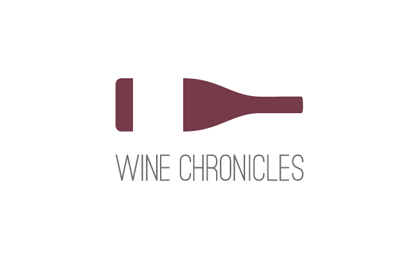 Wine Chronicles
Wine Chronicles
Recent Comments